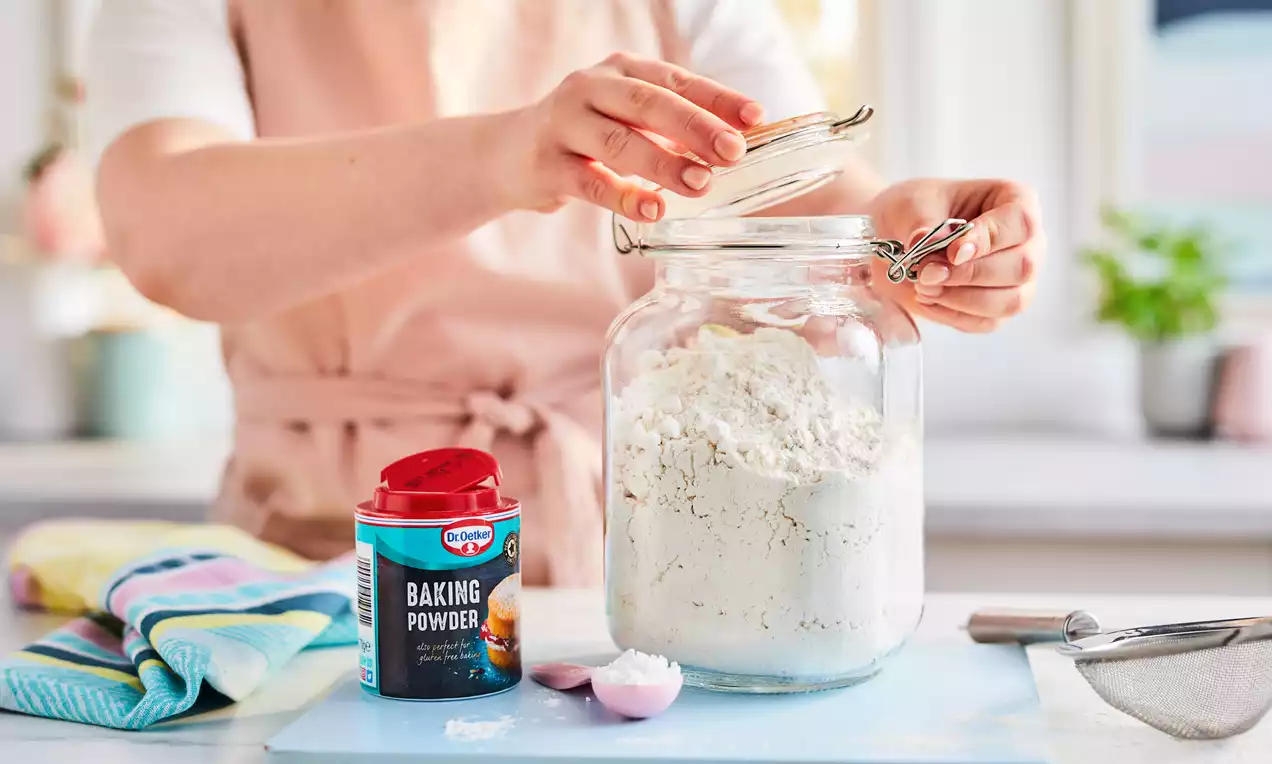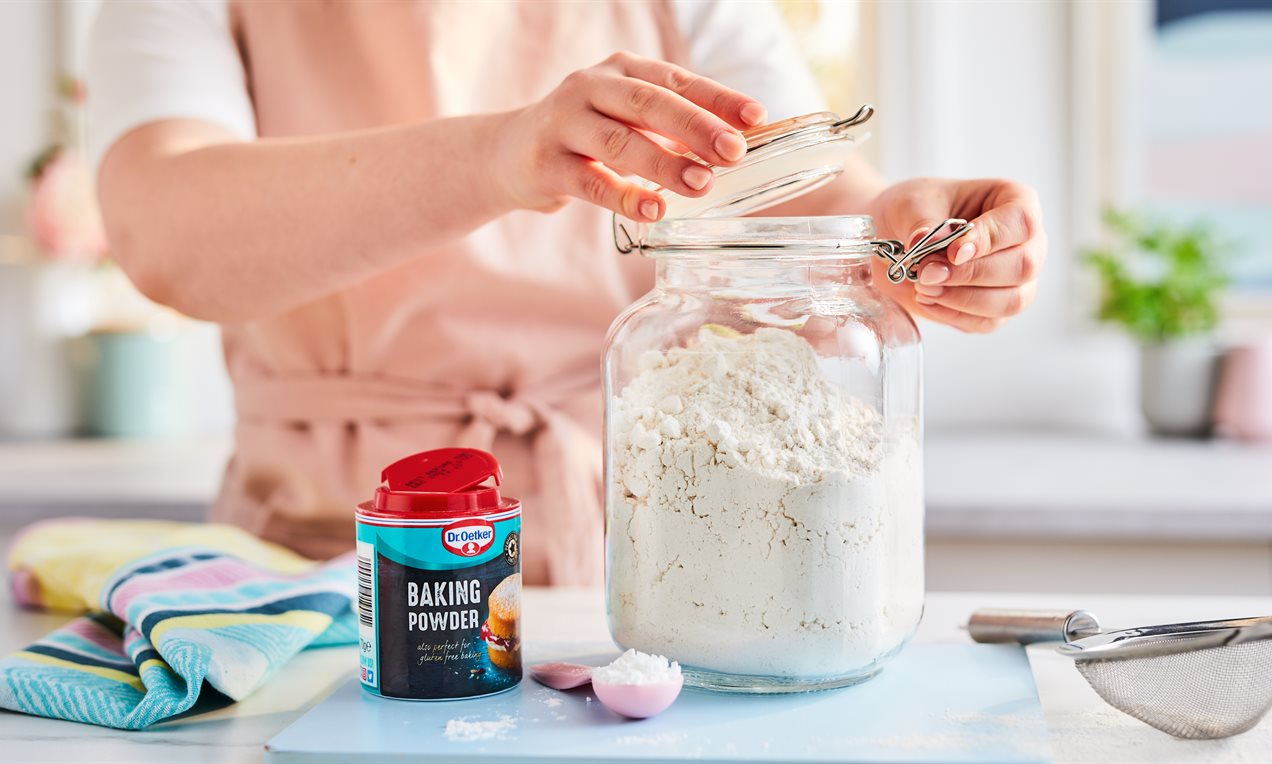
How to Make Self-Raising Flour
Self-raising flour is a common ingredient used in baking. You’ll see it appear on countless baking recipes including cakes, scones, pancakes, biscuits and more. Plus, it’s super easy and quick to make at home too.
Let’s look at what it is and how you can make your own. We’ll cover the equipment you need to make self-raising flour, how to store it and answer any questions you may have.
Self-raising flour is simply a blend of plain flour and baking powder. It’s used so regularly in baking as it contains raising agents that allow your bakes to rise. You can buy self-raising flour, but it’s easy to make your own. It’s also a good option for vegan baking too, as the baking powder acts as the raising agent instead of eggs.
• 150g plain flour
• 1.5 tsp baking powder
• Measuring spoons
• Weighing scales
• Mixing bowl
• Fine sieve
Follow these simple steps to make self-raising flour at home.
You’ll find lots of recipes suggesting different amounts of baking powder and plain flour. So, how much baking powder should be added to make self-raising flour?
In our baking we always use 1.5tsp baking powder to 150g of plain flour, which works every time. It’s important to level the ingredients correctly. Read our guide How to Measure Baking Ingredients Correctly to help.
Use the fine sieve to sift the baking powder and the plain flour together, as this allows the ingredients to be distributed evenly. Your self-raising flour is now ready to be used in your chosen recipe.

Once you’ve made your self-raising flour, store it in an airtight container and keep for up to eight weeks. After this time, the baking powder absorbs moisture from the air, which reacts with other ingredients in the flour affecting its ability to rise.
Can I use self-raising flour for pancakes?
Of course! Some people actually prefer to use self-raising flour in their pancakes because the added baking powder results in a lighter, fluffier pancake. Try out our American Pancake Stack recipe and top your stack with some delicious blueberries and a drizzle of maple syrup.
What’s the difference between self-raising flour in the UK and self-rising flour in the US?
The difference between self-raising flour in the UK and the US, is that in the States it often has a lower amount of baking powder and contains added salt. If a recipe specifies either one, it’s best to use homemade self-raising flour.
Can I make gluten-free self raising flour?
Yes, the recipe is very similar apart from the ratio of flour to baking powder would be larger. So for 150g of gluten-free plain flour, you would need 3tsp of gluten-free baking powder. Simply combine these ingredients together into a bowl using a sieve in the same way as above.
Can I use self-raising flour for Yorkshire puddings?
It may seem a good idea to use self-raising flour to give more height to your Yorkshire puddings but it doesn’t work this way. This is because the heating of the oil creates the steam, which allows the Yorkshire puddings to rise. If you add a raising agent in as well they would have the opposite effect, and the pudding could collapse. And no one wants a flat Yorkie!
Is all purpose flour plain or self-raising?
You may have seen the ingredient all purpose flour in some recipes and wondered what it is. These recipes are usually American – all purpose flour is simply the American equivalent of plain flour, and so it isn’t self-raising.
To help with your other bakes at home, check out some of our helpful baking tips and tricks, including how to ice a cake and what to do with leftover egg yolks. And to enhance your baking experience, why not try ourBaking Powder, Bicarbonate of Soda andNatural Extract Flavours Happy baking